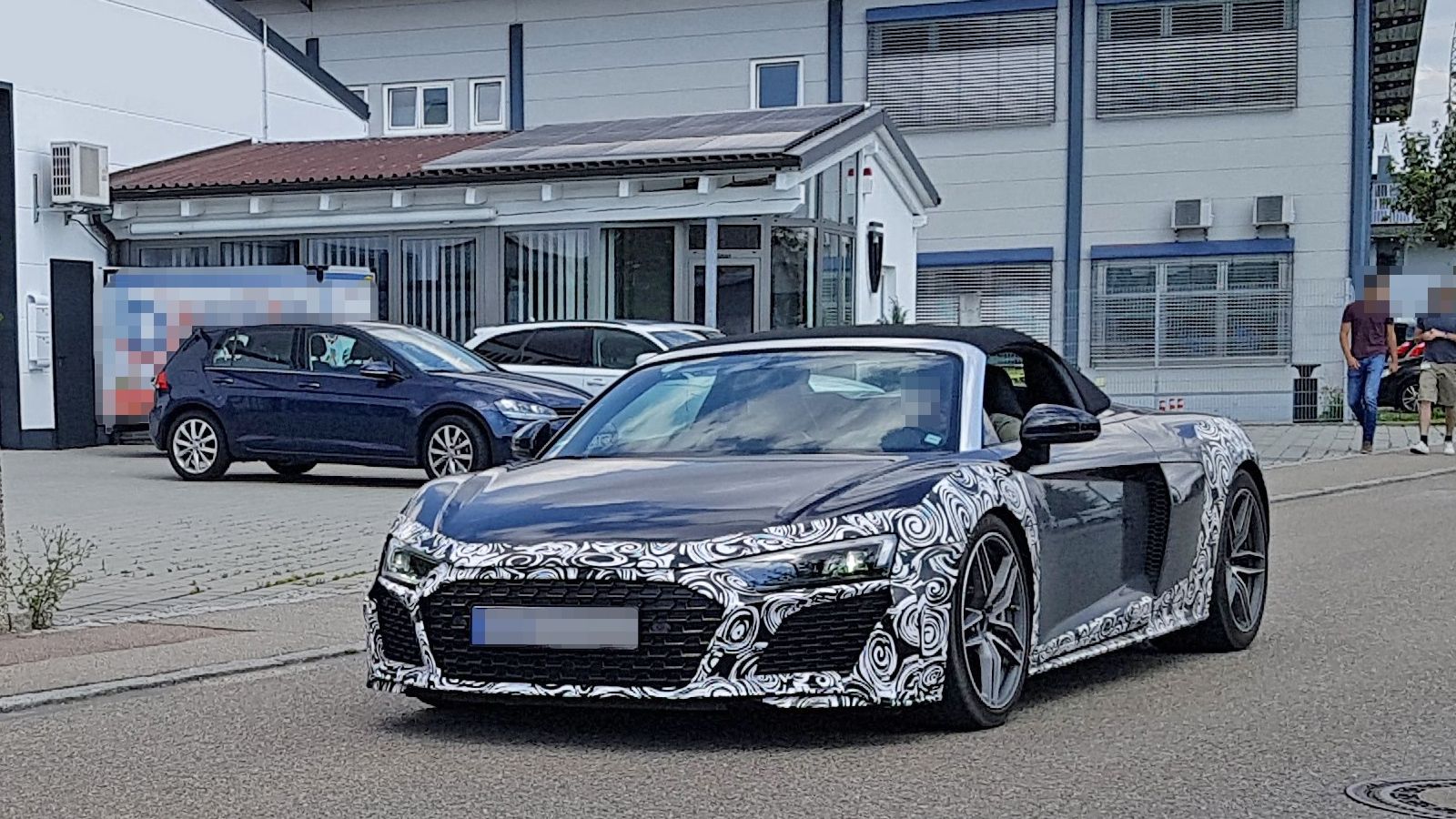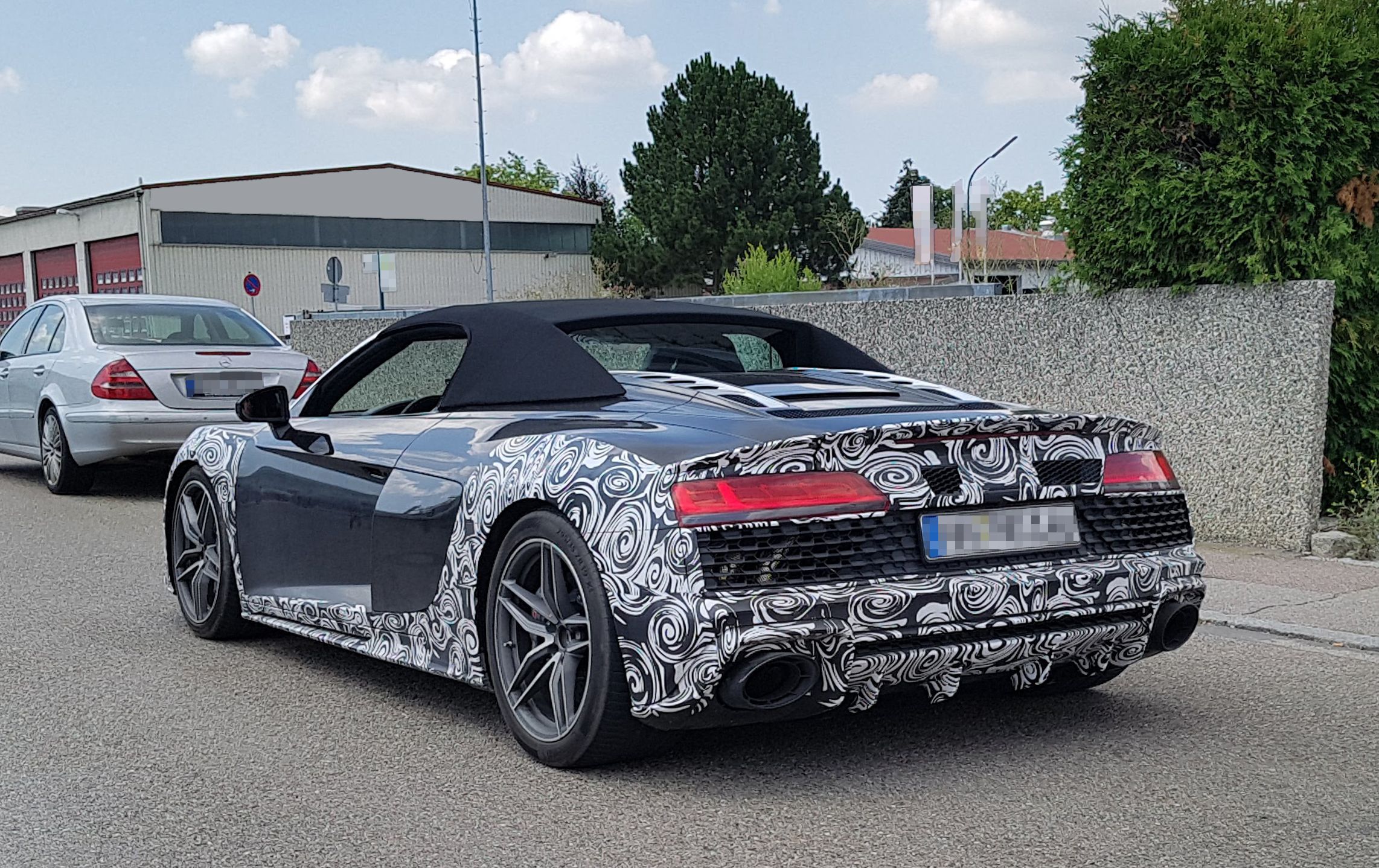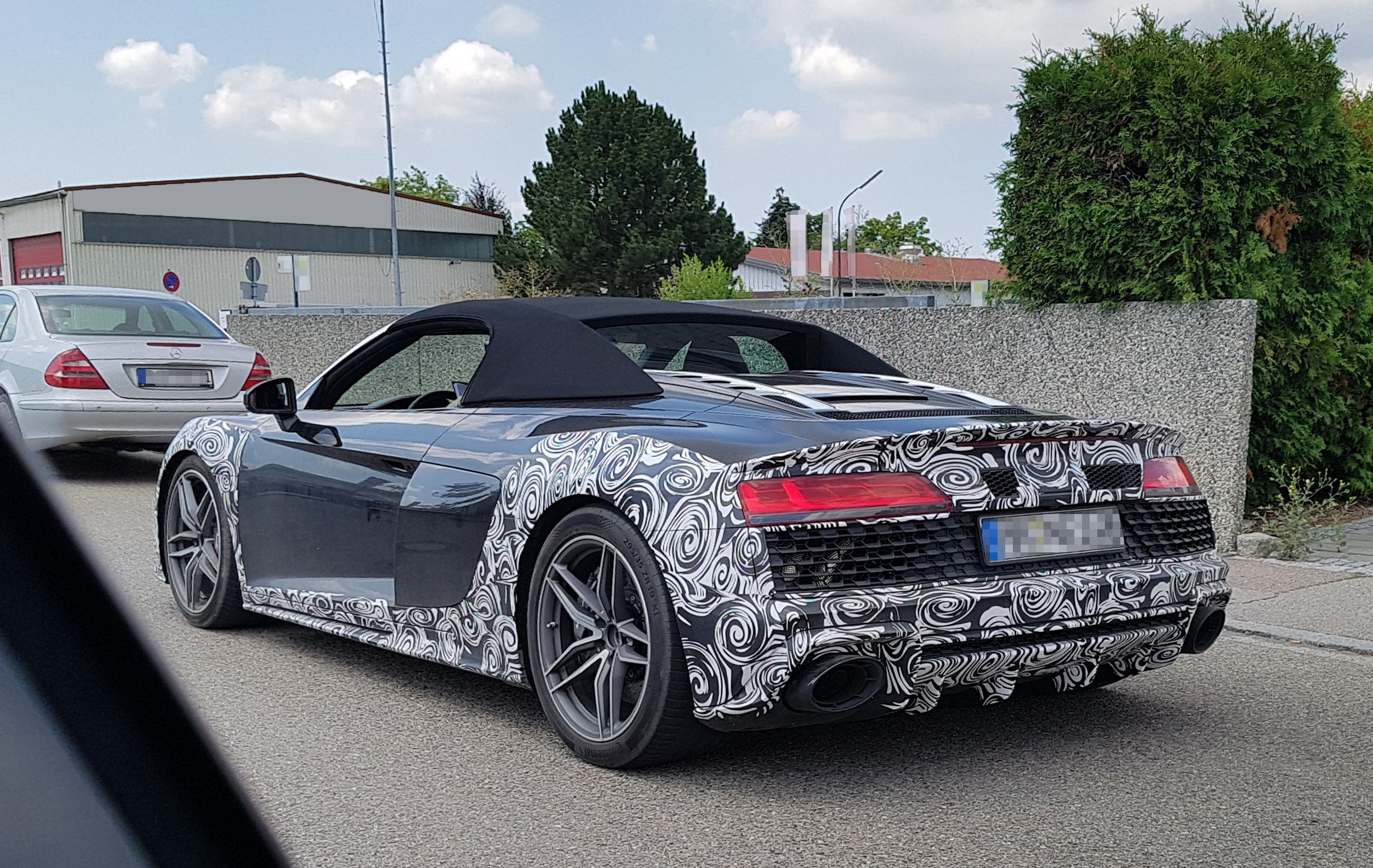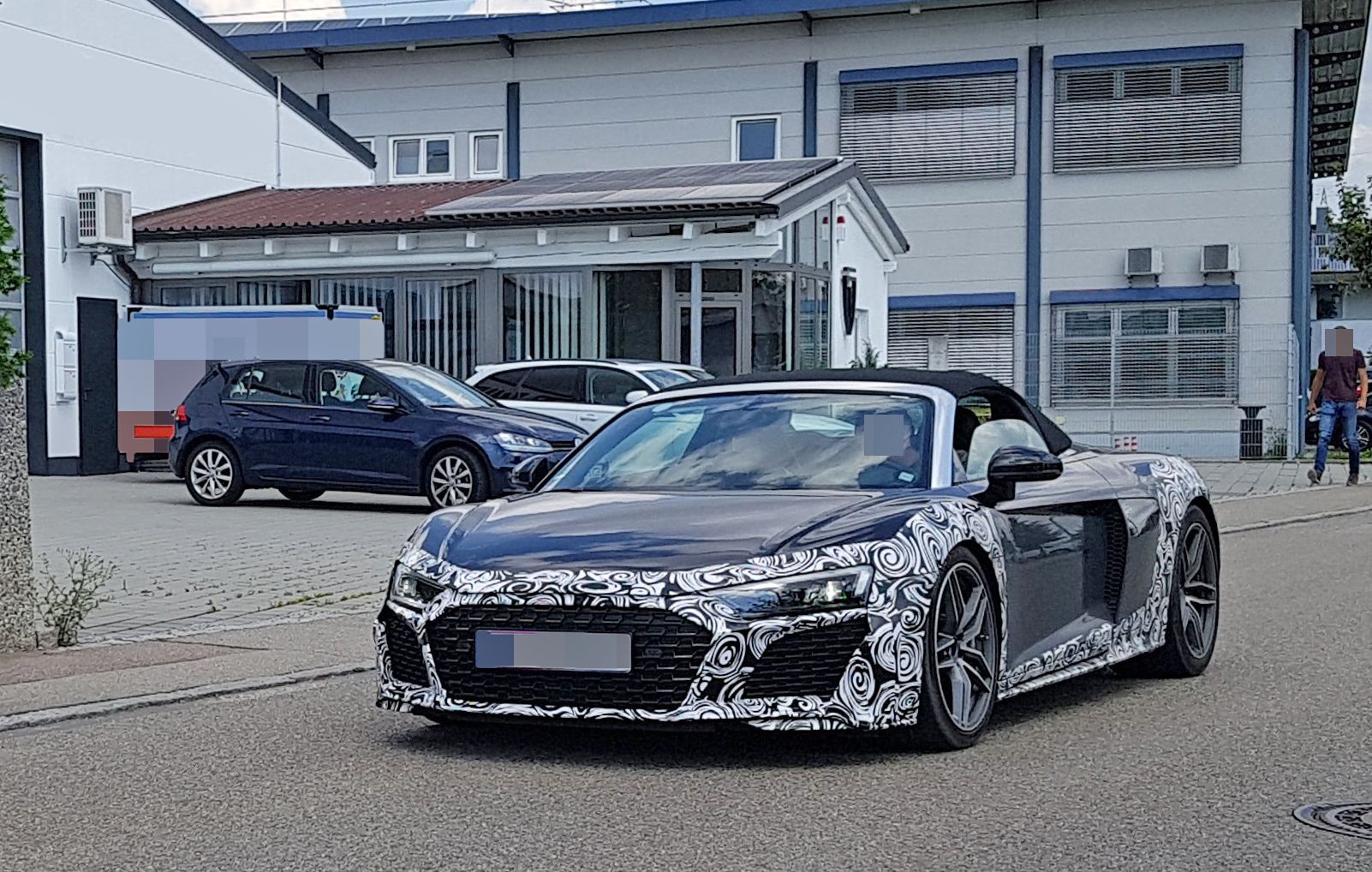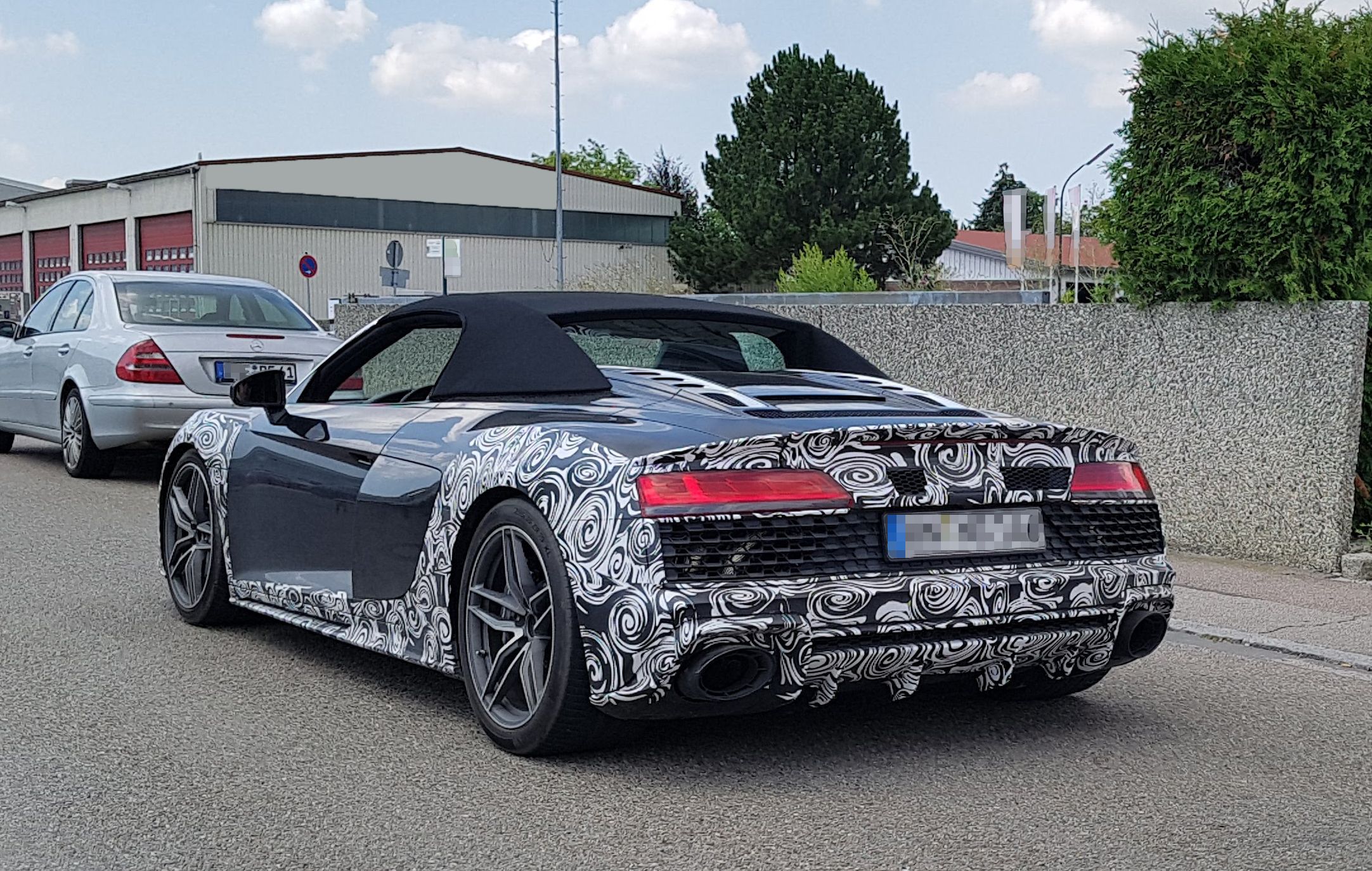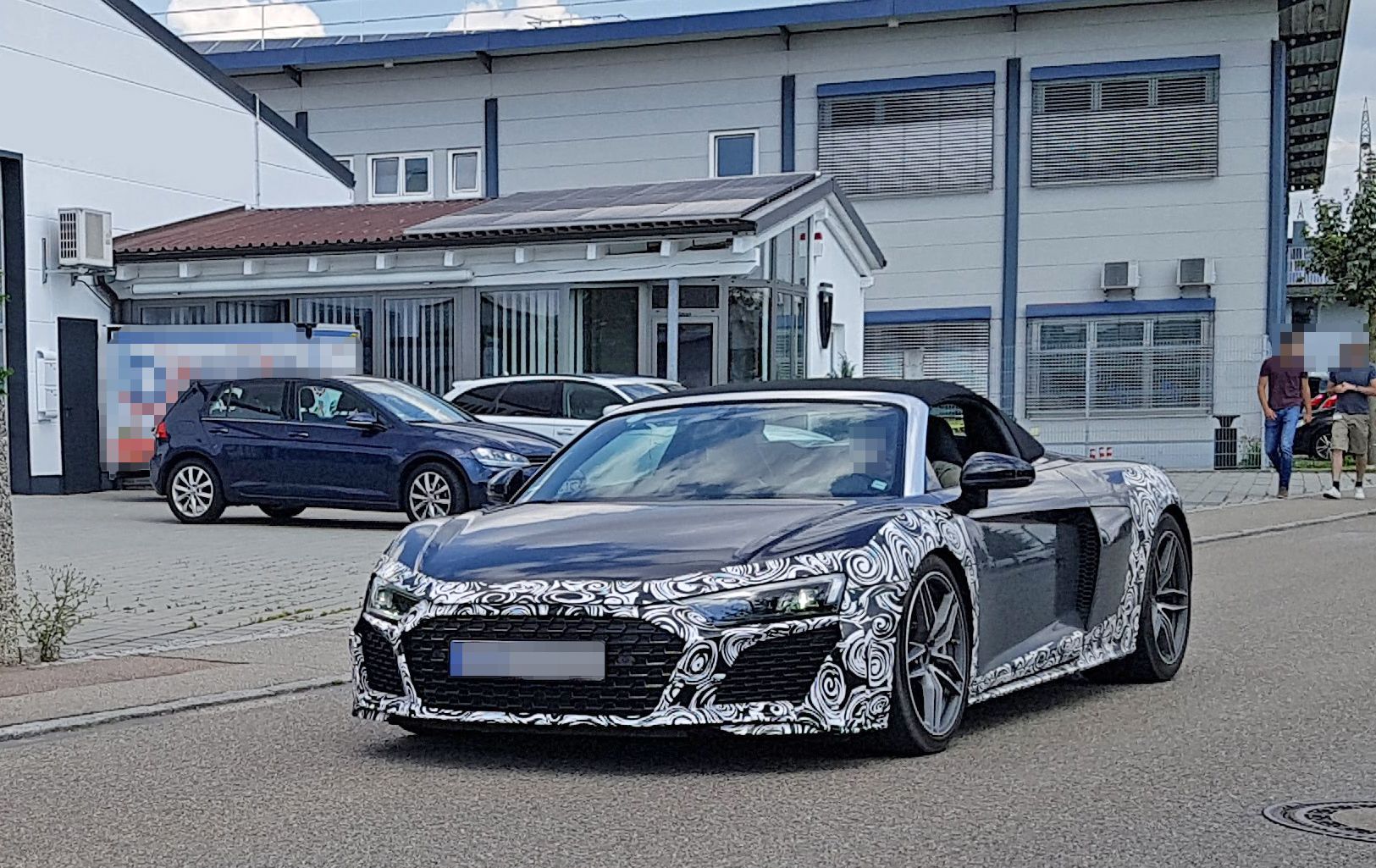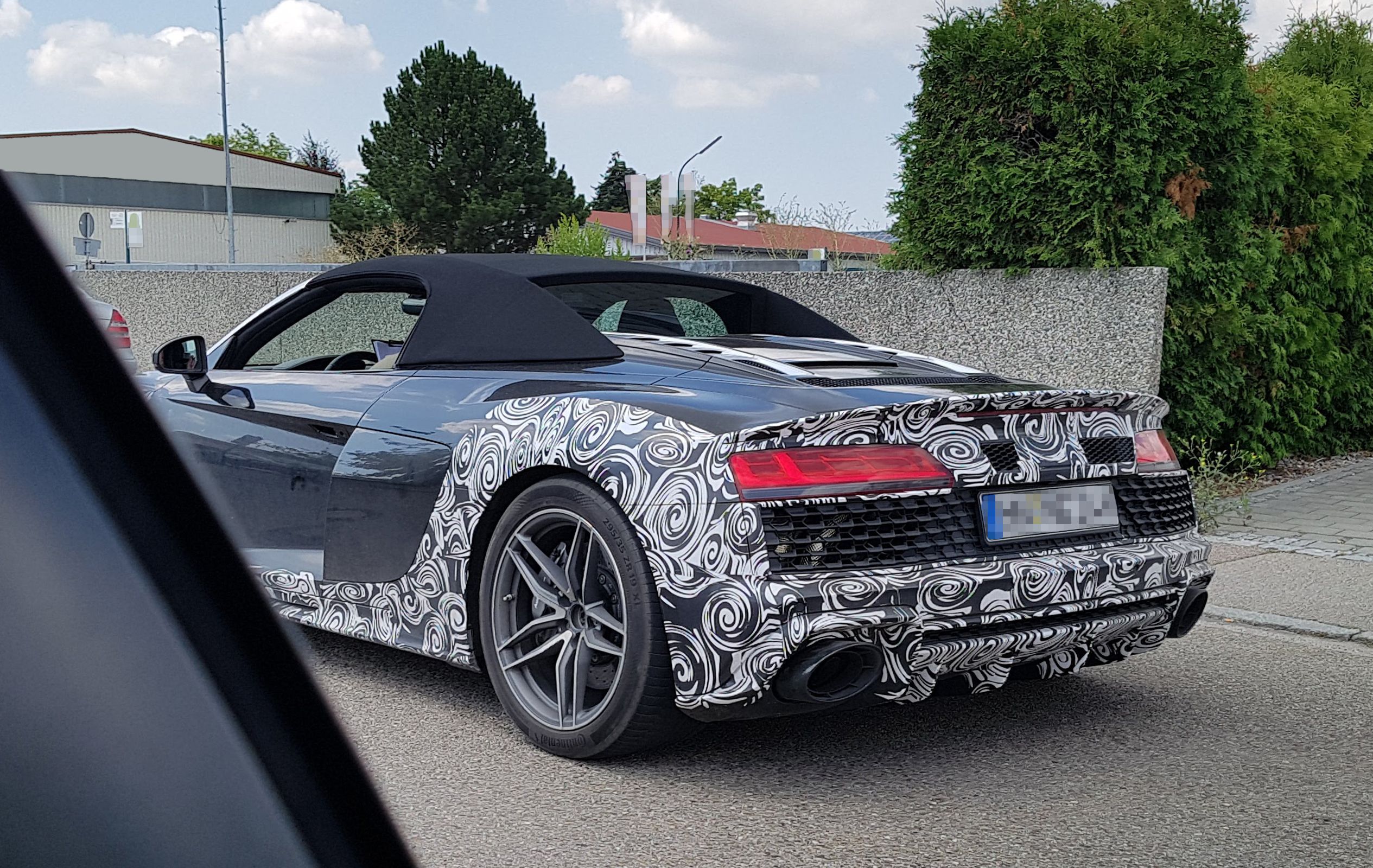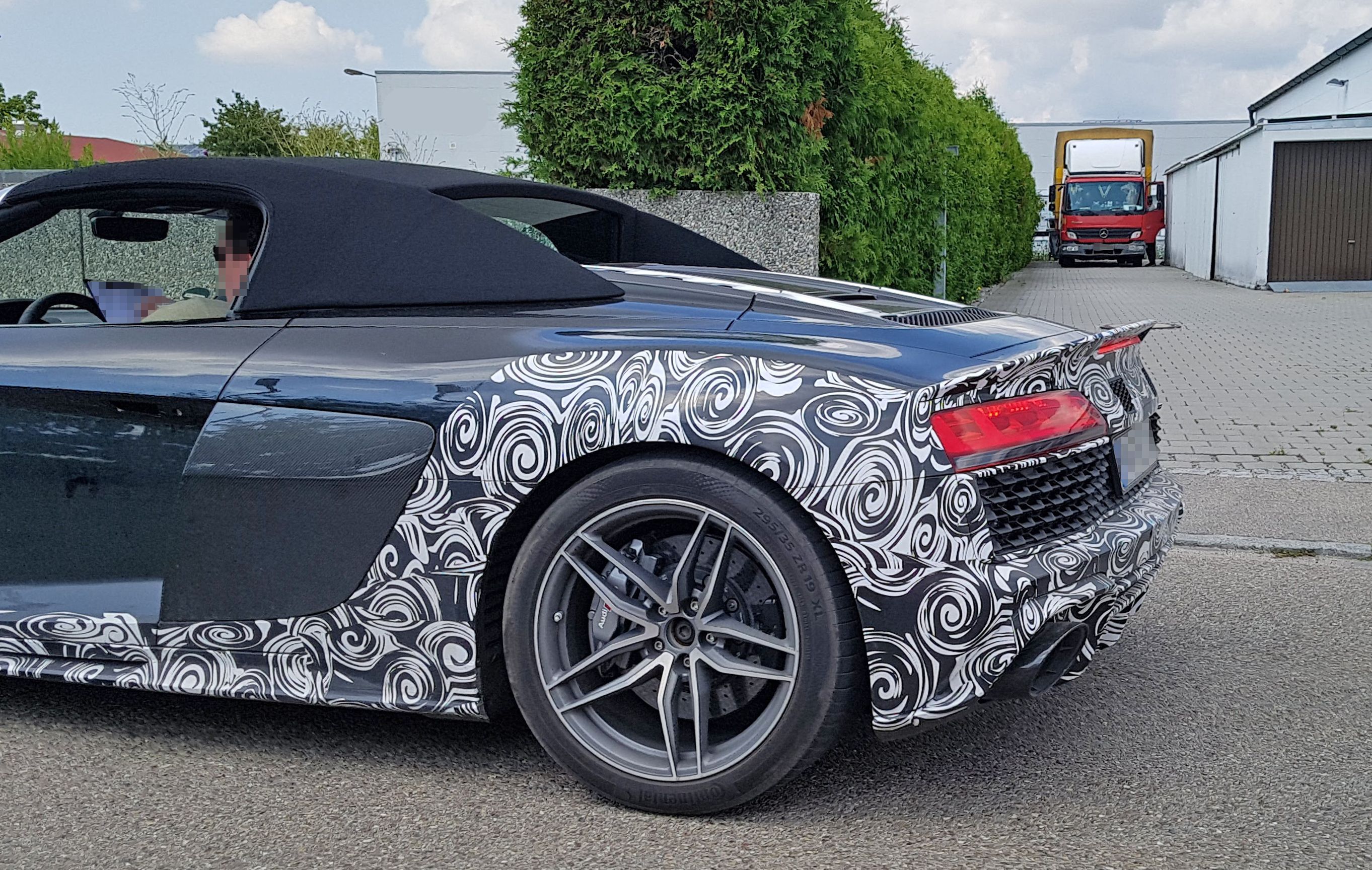The second-generation Audi R8 was launched in 2015 and, despite rumors that it may be discontinued, the supercar will live on for at least a few more years. The facelifted version of the R8 coupe was spotted on public roads back in March, and now the Spyder model surfaced with similar updates.
While notable changes make sense for a mid-cycle refresh, word has it that the Spyder in out latest shots could be more than just a facelift. Audi may be working on a beefed-up version of the supercar that could carry an "RS" or "GT" badge. With the nameplate likely to go into the history books in a few years, the Germans might be looking to give it a proper send-off with a more aerodynamic and powerful version. Unfortunately, Audi is still mum on the details, so we won't know for sure until the company spills the beans or the camo comes off. Meanwhile, let's have a closer look at what the updated R8 Spyder might bring to the table.
Continue reading to learn more about the upcoming Audi R8 Spyder.
2019 Audi R8 Spyder
- Make: Array
- Model: 2019 Audi R8 Spyder
Exterior
If this test car shows the facelifted model, then Audi has put a lot of effort in this mid-cycle refresh. The front fascia looks almost like a redesign, with many modifications changing the way the R8 looks. The Singleframe grille is the first new feature that catches the eye. The unit is wider, has sharper corners toward the sides, and it's also narrower, giving the front end a more aggressive, planted look.
The headlamps remained unchanged in terms of shape and size, but the outlets underneath are radically different. While the outgoing model sports squared-off vents with vertical slats, the new R8 Spyder gained sleeker outlets with arched surrounds. Also, while the old vents go all the way up the headlamps, the revised bumper includes a painted area between the two elements. While I think that the previous vents look far more aggressive on the R8, the new outlets work better with the wider and narrower grille. Down below, the small splitter is flanked by two winglets that peak out from under the apron.
Onto the sides, the test car is identical to the current R8 Spyder, but there's one tiny detail that sets it apart: the thin vent under the door. While it may seem like a gap in the camouflage, we've seen this vent on the coupe too. I have no idea what its purpose might be, but it could improve aerodynamics or cooling.
There are plenty of changes to talk about around back as well, starting with the bigger spoiler. The outgoing model also has an integrated spoiler, but the new element is twice as big. The license plate is no longer flanked by two separate grilles. Instead, Audi made a wide one that stretches the entire width of the rear fascia. The diffuser was revised too, now with more space between the vertical fins. The scoops on each side are gone. Finally, Audi replaced the rectangular exhaust pipes with massive, oval outlets. These are usually seen on RS model, so it's a bit surprising to find them here. On the other hand, the R8 is a high-performance RS model even though it doesn't have the badge.
It's still unclear whether this is a facelift or a higher performance version of the supercar, but it's definitely sexier than the outgoing model.
Interior
The soft-top prevented our paparazzi from looking inside the car, but changes shouldn't be as extensive as on the outside. I expect the layout to remain the same, with minor changes to the trim and upholstery. So look for the same race-inspired dashboard design with buttons placed just below the center stack and a wide center console with carbon-fiber trim. Behind the multi-function, flat-bottom steering wheel you will find the same 12.3-inch instrument cluster, but it should have new graphics for the dials and the navigation system.
The Alcantara and Nappa leather combo should remain standard, but you will still be able to choose a full Nappa leather upholstery, as well as diamond-quilted stitching. Standard tech will include MMI Navigation, the MMI touch wheel, and the Audi connect module, which gives the passenger the ability to connect his smartphone or table to the car's Wi-Fi hotspot. Naturally, the Spyder benefits from the infinite headroom that comes with all cabriolets.
Drivetrain
The facelifted R8 Spyder will continue to use the same 5.2-liter V-10 engine that it shares with the Lamborghini Huracan. The unit produces 540 horsepower and 398 pound-feet in the current model, and it could get a notable boost. However, because the V10 Plus model is rated at 610 horses and 413 pound-feet, the regular model won't get too close to the 600-horsepower mark. It's safe to say that Audi will probably retune it to around 560 horses and 420 pound-feet.
This should be enough for the Spyder to hit 62 mph in 3.5 seconds, a tenth-second quicker than the outgoing model. As usual, it will use an S Tronic dual-clutch transmission only and a Quattro all-wheel-drive system as standard. The revised Quattro system should be able to divert up to 100 percent of the power to the rear wheels in normal driving conditions and split it between both axles on slippery surfaces.
In the unlikely event that this test car is actually an RS or GT model placed above the V10 Plus, the 5.2-liter mill should deliver well in excess of 600 horsepower. Some rumors claim that Audi is working on a version that could benefit from 650 to 700 horsepower, but there's no official confirmation that such a model is under development.
Either way, the R8 will remain one of the quickest sports car out there and one of the very few to still use a V-10 engine.
Prices
Pricing shouldn't change much with the facelift, so the R8 Spyder should start below the $180,000 mark. The outgoing model retails from $177,100, nearly $40,000 more expensive than the coupe version. Far from affordable!
Competition
Porsche 911 Turbo Cabriolet
The 911 Turbo might be different due to its engine being placed in the rear and not behind the front seats, but it has the power to defeat the R8. Updated for the 2017 model year, it retains the styling cues of its predecessor, but it gained updated tech and a more powerful engine. Motivation is provided by a 3.8-liter flat-six that cranks out 540 horsepower and the base model. This version hits 60 mph in only three seconds, a tenth-second quicker than the R8. More power comes in the Turbo S trim, which delivers a whopping 580 horses. The sprint to 60 mph drops to 2.9 clicks in this variant. Pricing for the 911 Turbo Cabriolet is similar to the R8, retailing from $174,100. The Turbo S, on the other hand, is significantly more expensive at $203,000 before options.
Read our full review of the 2018 Porsche 911 Turbo Cabriolet.
McLaren 570S Spider
Introduced for the 2016 model year as McLaren’s first sports car aimed at the Porsche 911 Turbo, the 2016 McLaren 570S gained a Spider version almost immediately. Much like its competitors from Porsche and Audi, the 570S Spider makes use of the coupe’s drivetrain, a twin-turbo 3.8-liter V-8 that cranks out 562 horsepower and 443 pound-feet of torque. More powerful than the base R8, the Spider is also quicker, hitting 60 mph in 3.1 seconds. Its top speed is rated at 204 mph with roof up and 196 mph with the top down. The British drop-top retails from around $200,000, which makes it the most expensive of the bunch.
Read our full story on the 2018 McLaren 570S Spider.
Conclusion
If this car is indeed a facelift to the current R8, then we're in for a significant upgrade. The newly unveiled TT also gained many new features on the outside, but it seems that the R8 is getting a lot more attention. Hopefully, the heavily revised exterior will be backed by a more powerful engine and a revised chassis that will make the supercar even more agile at the track. If Audi is actually working on a more powerful version of the R8 placed atop the V10 Plus, thing should get even more interesting. That's because the R8 could become significantly more powerful than the Porsche 911 Turbo and enter Ferrari territory. But as I said, if this is only a facelift, I'm already pleased with the way the updated R8 will look on the outside.
Further Reading
Read our full review on the 2017 Audi R8.
Read our full review on the 2017 Audi R8 Spyder.
Read our full review on the 2018 Audi R8 Spyder V10 Plus.
Read more Audi news.

